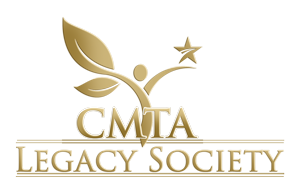The Charcot-Marie-Tooth (CMT) Association announced a $33,000 grant on April 25 that will enable Maurizio D’Antonio, PhD, to establish if molecules that selectively activate the ATF6 pathway of the Unfolded Protein Response (UPR) can engage targets in the peripheral nerves of CMT1B mouse models.
If so, D’Antonio and his team at San Raffaele Scientific Institute in Milan, Italy will perform a time-course study to identify the best dosing strategy
CMT1B neuropathy is caused by a mutation in the myelin protein zero (MPZ/P0) gene. It is one of the four most prevalent types of CMT, causing around 5 percent of cases. The mutated protein causes deficits within the myelin sheath, which insulates the nerve and is needed for the efficient transmission of nerve impulses. Retention of the mutant protein within cells and activation of cellular stress pathways such as the UPR are common disease-causing mechanisms among MPZ mutations.
D’Antonio and his team have been studying the role of the UPR in demyelinating neuropathies for many years, and the CMTA has funded previous research in this area. This has enabled the team to collect strong evidence that the UPR pathways are a good target for therapies to treat CMT1B and CMT1A.
“Modulation of the UPR is emerging as an exciting therapeutic option for many conditions, including demyelinating types of CMT,” D’Antonio said, adding: “Thanks to the CMTA funding we will establish if targeting the ATF6 pathway is a viable option for CMT1B. Positive results will allow us to quickly move to preclinical trials in different CMT1B models with selective activators of ATF6.”
D’Antonio will also explore the possibility of combinatorial therapies targeting multiple UPR pathways simultaneously, which may result in a synergistic beneficial effect. Positive results would stimulate the development of these compounds for clinical trials.
About CMTA
The CMTA is the largest philanthropic funder of CMT research worldwide. The CMTA’s Strategy to Accelerate Research (STAR) brings the best CMT researchers, clinicians, and experts in therapy development together with pharmaceutical and biotechnology companies and patients to expedite the development of treatments for CMT. Since 2008, the CMTA has invested more than $18.5 million in STAR, with plans to invest another $10 million in the next few years. The CMTA is also actively working to help improve the quality of life for all families living with CMT by offering educational programs and materials, hosting patient and professional conferences, providing support to families through its nationwide branch system through North America and more. More information can be found at www.cmtausa.org.
About CMT
CMT is a group of diseases caused by inherited genetic mutations that damage the peripheral nerves outside of the brain and spinal cord. Scientists have identified over 100 different gene mutations causing CMT. Most people (90 percent) have one of four types of CMT: CMT 1A (PMP 22); CMT 1B (MPZ); CMT 2A (MFN2) and CMT 1X (GJB1). It is estimated that CMT affects more than 3 million people worldwide, regardless of gender, race, or ethnicity. https://www.cmtausa.org/understanding-cmt/what-is-cmt/





